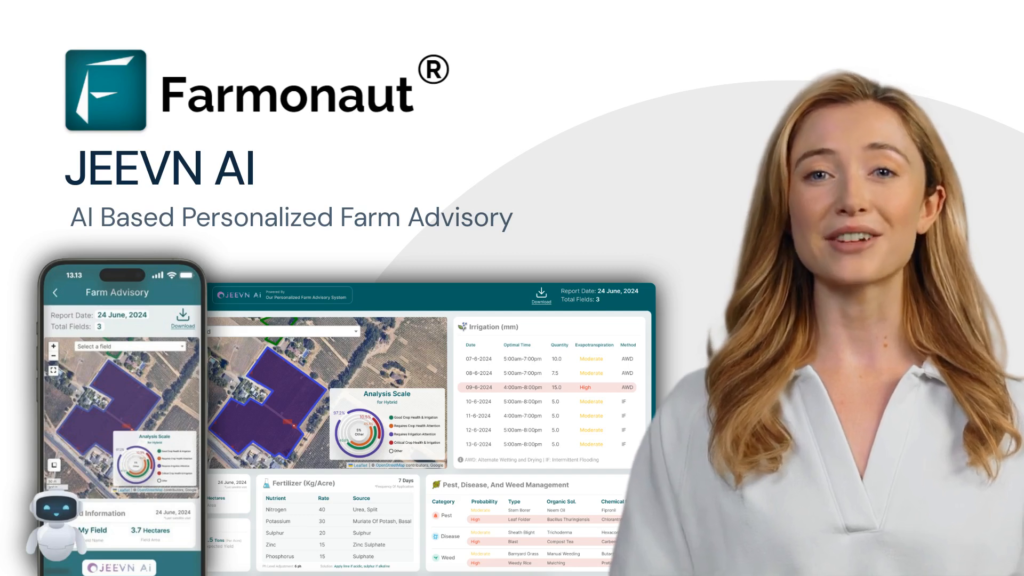Revitalizing West Texas Farms: 6 Essential Soil Health Practices for Sustainable Agriculture

“Organic farmers in Texas can reduce fertilizer use by up to 50% through proper soil health management practices.”
In the vast expanse of West Texas, where the horizon stretches endlessly and the sun beats down relentlessly, a quiet revolution is taking place. We’re witnessing a transformation in agriculture that’s as profound as it is necessary. At the heart of this change lies a renewed focus on one of nature’s most precious resources: soil. As we delve into the world of sustainable farming practices, we’ll explore how farmers in this challenging climate are revitalizing their lands and securing a more prosperous future for generations to come.
The Soil Health Imperative in West Texas Agriculture
Soil health has emerged as a cornerstone of sustainable agriculture, gaining increasing attention from farmers and researchers alike. In the arid landscapes of West Texas, where every drop of water counts and the wind can strip away years of hard work in a single storm, the importance of nurturing healthy soil cannot be overstated. We’ve seen firsthand how farmers like Jeremy Brown from Dawson County are leading the charge in this soil stewardship movement.
With 15 years of experience cultivating a diverse array of crops including cotton, sorghum, wheat, and peanuts, Brown has made soil health the focal point of his farming strategy. His commitment isn’t just about better yields or cost savings; it’s deeply rooted in a sense of moral responsibility. “We believe we’re accountable to God for how we care for this land,” Brown often says, echoing a sentiment that’s gaining traction among farmers who see themselves as stewards rather than mere users of the earth.
The Knowledge Gap and Changing Mindsets
Despite his agricultural background and formal education, Brown admits there was a significant gap in his early understanding of soil health. This lack of knowledge isn’t unique to him but reflects a broader issue among many farmers in West Texas. We’ve observed that changing long-established farming practices is no small feat. Many farmers adhere to traditional methods passed down through generations, even when these practices may be detrimental to long-term soil health.
The reliance on synthetic fertilizers and pesticides has been particularly problematic. These substances, while offering short-term gains, can harm not only the environment but also human health in the long run. We believe that healthy soil is the foundation for producing abundant, nutrient-rich crops crucial for feeding consumers. The shift towards healthier farming practices requires more than just new techniques; it demands a fundamental change in mindset.
Six Guiding Principles for Soil Health
To foster soil health effectively, we’ve identified six essential practices that farmers in West Texas should adopt. These principles form the backbone of sustainable agriculture in this challenging climate:
- Minimize Soil Disturbance: Reduce tillage to protect soil structure and beneficial organisms.
- Maintain Soil Cover: Use cover crops or crop residues to shield soil from erosion and temperature extremes.
- Increase Plant Diversity: Implement crop rotation and intercropping to enhance soil biodiversity.
- Keep Living Roots in the Soil: Maintain active root systems year-round to support soil microorganisms.
- Integrate Livestock: Incorporate grazing animals to improve nutrient cycling and soil structure.
- Efficient Water Management: Implement conservation irrigation techniques to maximize water use efficiency.
These practices not only improve soil health but also contribute significantly to dust storm prevention in farming, a critical issue in the region.
Addressing the Dust Bowl Legacy
The specter of the Dust Bowl still looms large over West Texas agriculture. While historical circumstances like the Dust Bowl were partly due to ignorance of sustainable practices, modern farmers have access to better knowledge and techniques. We emphasize that implementing soil health practices is crucial for preventing similar ecological disasters in the future.
Dust storms remain an ongoing concern in the region, but with proper soil management, we can mitigate their impact. By maintaining soil cover and reducing tillage, farmers can significantly decrease wind erosion, protecting both their land and the surrounding communities.
Transitioning to Organic Farming Techniques
The journey towards improved soil health often leads farmers to consider organic farming techniques. This transition, while challenging, can yield significant benefits for both the environment and crop quality. We’ve seen farmers like Brown successfully integrate organic practices into their operations, resulting in reduced reliance on synthetic inputs and improved soil fertility.
Organic farming techniques focus on building soil organic matter, which is crucial for water retention, nutrient cycling, and carbon sequestration. By eliminating synthetic pesticides and fertilizers, organic farmers also promote a healthier ecosystem on their farms, encouraging beneficial insects and microorganisms that contribute to overall soil health.
The Environmental Impact of Fertilizers
One of the most significant challenges in transitioning to sustainable agriculture is addressing the environmental impact of fertilizers. Synthetic fertilizers, while providing readily available nutrients to crops, can have detrimental effects on soil health and surrounding ecosystems. We’ve observed that excessive use of these fertilizers can lead to soil acidification, water pollution, and reduced soil biodiversity.
In contrast, organic and sustainable farming practices focus on building soil fertility through natural means. This includes the use of cover crops, composting, and crop rotation to enhance nutrient availability. By reducing reliance on synthetic fertilizers, farmers can minimize their environmental footprint while still maintaining productive farmland.
“Implementing sustainable soil practices can increase crop yields by 20-30% in dry West Texas climates.”
Strategies for Nutrient-Rich Crop Production in Dry Climates
Producing nutrient-rich crops in the dry climate of West Texas presents unique challenges. However, we’ve found that by focusing on soil health, farmers can significantly improve their crop quality and resilience to drought conditions. Here are some key strategies:
- Implement drought-resistant crop varieties
- Use mulching to conserve soil moisture
- Practice conservation tillage to improve water infiltration
- Employ precision irrigation techniques
- Enhance soil organic matter to improve water retention
These strategies not only help in producing nutrient-dense crops but also contribute to the overall sustainability of farming operations in arid regions.
The Role of Technology in Sustainable Agriculture
As we embrace sustainable farming practices, technology plays an increasingly important role in optimizing resource use and monitoring soil health. Tools like Farmonaut are revolutionizing how farmers approach soil management and crop production.
Farmonaut offers advanced satellite-based farm management solutions that provide real-time insights into crop health, soil moisture levels, and other critical metrics. By leveraging this technology, farmers can make more informed decisions about irrigation, fertilizer usage, and pest management, ultimately optimizing crop yields while reducing resource wastage.
For those interested in integrating Farmonaut’s technology into their own systems, the company offers an API with comprehensive developer documentation.
The Importance of Gradual Implementation
While the benefits of sustainable soil practices are clear, we always advise farmers to approach changes gradually. Brown suggests that farmers begin their journey towards improved soil health incrementally. This measured approach allows for experimentation and adaptation without risking large-scale failures or financial setbacks.
Starting with small test plots or piloting new practices on a portion of the farm can provide valuable insights and build confidence in new methods. As farmers see positive results, they can gradually expand these practices across their entire operation.
Education and Community Support
The transition to sustainable agriculture is not a journey that farmers need to make alone. We’ve seen the power of education and community support in facilitating this shift. Local agricultural extension services, farmer cooperatives, and soil health workshops play crucial roles in disseminating knowledge and best practices.
Peer-to-peer learning opportunities, where farmers can share their experiences and learn from each other’s successes and challenges, are particularly valuable. These connections foster a sense of community and mutual support that is essential for the long-term success of sustainable agriculture initiatives.
The Broader Impact of Sustainable Agriculture
The benefits of adopting sustainable soil health practices extend far beyond individual farms. We believe that this approach to agriculture has the potential to address some of the most pressing challenges facing our food systems and the environment. By improving soil health, farmers can:
- Enhance food security by increasing crop resilience and productivity
- Mitigate climate change through increased carbon sequestration in soils
- Improve water quality by reducing runoff and erosion
- Preserve biodiversity both above and below ground
- Contribute to the long-term sustainability of rural communities
These wide-reaching benefits underscore the importance of supporting farmers in their transition to more sustainable practices.
Overcoming Challenges in Sustainable Agriculture
While the path to sustainable agriculture is clear, it’s not without its challenges. Farmers transitioning to these practices often face obstacles such as:
- Initial costs of implementing new practices or purchasing equipment
- Learning curve associated with new techniques
- Potential short-term yield reductions during the transition period
- Market pressures and consumer expectations
- Regulatory hurdles and policy gaps
Addressing these challenges requires a concerted effort from farmers, policymakers, researchers, and consumers. We believe that by working together, we can create an agricultural system that is both productive and sustainable for generations to come.
The Future of Farming in West Texas
As we look to the future of farming in West Texas, we see a landscape transformed by the principles of soil health and sustainable agriculture. Farms that once struggled with erosion and declining productivity are becoming resilient, diverse ecosystems capable of withstanding the challenges of a changing climate.
The adoption of technologies like Farmonaut will play a crucial role in this transformation. By providing farmers with real-time data and insights, these tools enable more precise and efficient management of resources, further enhancing the benefits of sustainable practices.
Conclusion: A Call to Action for Sustainable Soil Stewardship
The journey towards sustainable agriculture in West Texas is ongoing, but the path forward is clear. By embracing the six essential soil health practices we’ve outlined and leveraging innovative technologies, farmers can revitalize their lands, improve their yields, and contribute to a more sustainable future for all.
We call on farmers, policymakers, and consumers to recognize the critical importance of soil health in our agricultural systems. By supporting sustainable farming practices and the farmers who implement them, we can ensure a resilient, productive, and environmentally sound agricultural sector for generations to come.
The future of farming in West Texas is in our hands. Let’s work together to build a legacy of healthy soils, thriving farms, and sustainable communities.

6 Essential Soil Health Practices for West Texas Farms
| Practice | Description | Benefits | Implementation Difficulty (1-5 scale) |
|---|---|---|---|
| Minimize Soil Disturbance | Reduce tillage and mechanical soil disruption | Preserves soil structure, reduces erosion, maintains beneficial microorganisms | 3 |
| Maintain Soil Cover | Use cover crops or crop residues | Protects soil from erosion, regulates soil temperature, conserves moisture | 2 |
| Increase Plant Diversity | Implement crop rotation and intercropping | Enhances soil biodiversity, improves nutrient cycling, reduces pest pressure | 4 |
| Keep Living Roots in the Soil | Maintain active root systems year-round | Supports soil microorganisms, improves soil structure, increases organic matter | 3 |
| Integrate Livestock | Incorporate grazing animals into crop systems | Enhances nutrient cycling, improves soil structure, diversifies farm income | 5 |
| Efficient Water Management | Implement conservation irrigation techniques | Maximizes water use efficiency, reduces runoff, improves crop resilience | 4 |
Frequently Asked Questions
Q: How long does it take to see improvements in soil health after implementing these practices?
A: While some benefits can be observed within the first growing season, significant improvements in soil health typically take 3-5 years of consistent practice.
Q: Can sustainable soil practices really be profitable in a dry climate like West Texas?
A: Yes, while there may be initial challenges, many farmers report increased profitability due to reduced input costs and improved crop resilience over time.
Q: How can technology like Farmonaut help in implementing sustainable soil practices?
A: Farmonaut provides real-time data on crop health and soil conditions, allowing farmers to make more informed decisions about resource management and optimize their sustainable practices.
Q: Are there any government programs that support farmers transitioning to sustainable practices?
A: Yes, various USDA programs offer financial and technical assistance to farmers implementing conservation practices. Check with your local NRCS office for specific programs available in your area.
Q: How can consumers support farmers who are implementing sustainable soil practices?
A: Consumers can support these farmers by purchasing locally grown, sustainably produced foods, and advocating for policies that support sustainable agriculture.
Earn With Farmonaut: Affiliate Program
Earn 20% recurring commission with Farmonaut’s affiliate program by sharing your promo code and helping farmers save 10%. Onboard 10 Elite farmers monthly to earn a minimum of $148,000 annually—start now and grow your income!
Farmonaut Subscriptions
















